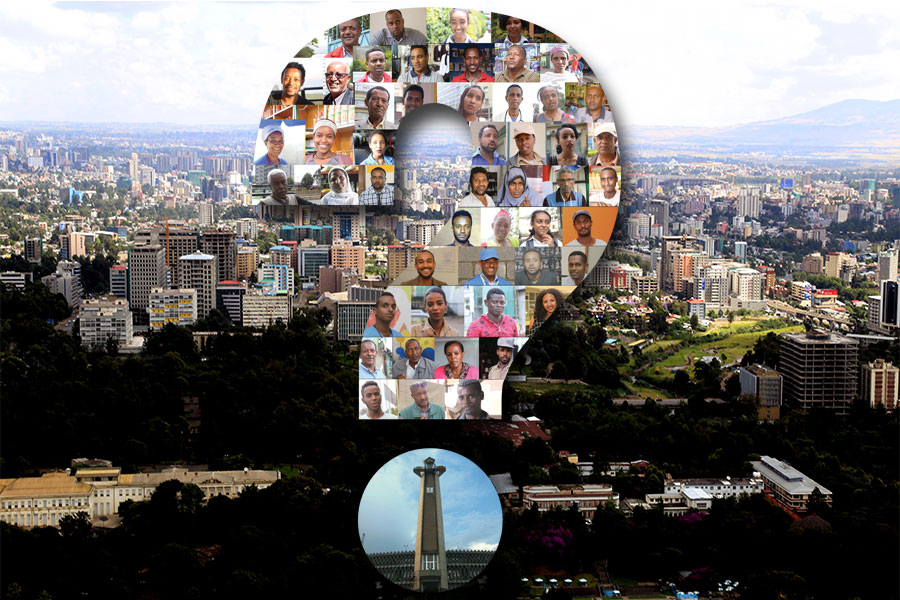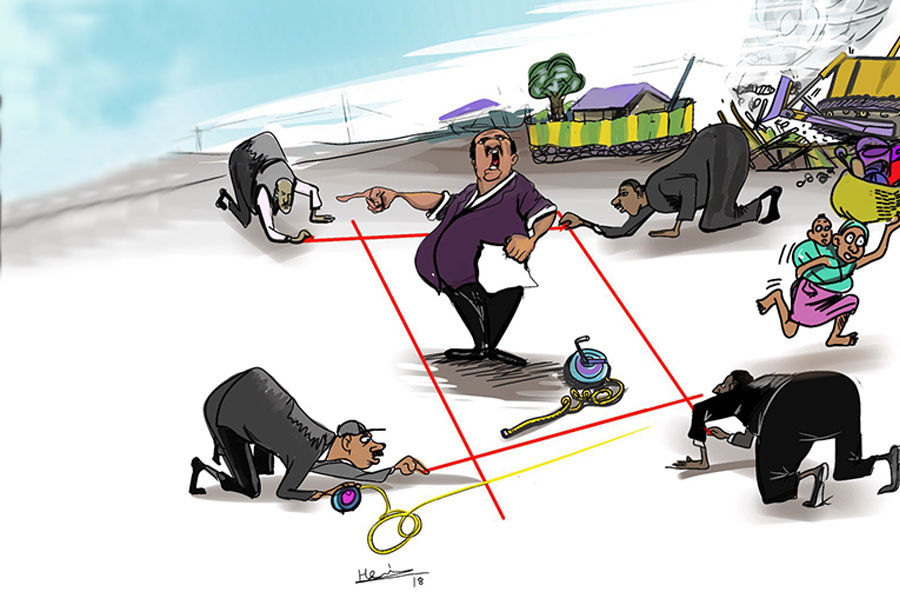
Fortune News | Mar 30,2019
Apr 1 , 2023
By Beniamino Callegari , Per Espen Stoknes
The common misconception is that population growth is the main cause of exceeding planetary boundaries. In reality, the world’s wealthiest people are the ones driving us toward the cliff, argue Beniamino Callegari, an associate professor at Kristiania University College and Per Espen Stoknes, director of the Center for Sustainability & Energy at the BI Norwegian Business School, in this commentary provided by Project Syndicate (PS)
An easy way to start a long, heated debate is to mention the global population. Thomas Malthus famously ignited furious arguments in the 19th Century when he warned that, absent fertility-control policies, exponential population growth would outpace improvements in agriculture and cause recurrent bouts of famine and pestilence. Industrialization would postpone the crisis, but not forever.
These arguments were still raging in the 1960s when Paul and Anne Ehrlich added fuel to the fire with their bestseller, "The Population Bomb" Their fears were reasonable, given the data. By 1975, the global population had doubled to four billion – in just under 50 years. It has doubled again, reaching eight billion last November.
This raises a new question: Will the population double again to 16 billion?
The answer is a resounding no. In fact, the global population will not get anywhere close to that level, owing to a paradigm shift in demographics over the past 50 years. The population growth rate peaked in the 1960s and has been falling steadily ever since. Women around the world are choosing to have fewer children, and the global average fertility rate is now above two children per woman.
Of course, this figure masks large geographic disparities. The number of children per woman is below two in places like Germany and Japan but much higher in most low-income countries, especially fragile states. Still, the United Nations estimates that the global population could peak at 10 billion to 11 billion people this century before starting to decline slowly. That is a huge number of mouths to feed, but it is nowhere near 16 billion.
Moreover, our own analysis in a new report, "People and Planet: 21st Century Sustainable Population Scenarios & Possible Living Standards Within Planetary Boundaries", produced for the Global Challenges Foundation in Stockholm, concludes that the global population could peak at a much lower level – around nine billion – by mid-century. And if the world invests more in economic development, education, and health, the global population could fall to levels at which everyone on earth can have sustainable access to clean energy, shelter, food, and water.
The bomb will have been defused, allowing everyone to live a good life within planetary boundaries. This should be cause for celebration.
Our projections come from a new system dynamics model, Earth4All, which allows us to explore two economic and population scenarios this century. In the first scenario, the world economy continues along a path similar to the one followed during the last 50 years; many of the poorest countries eventually break free from extreme poverty, and the global population peaks at 8.8 billion in the middle of the century before declining to 7.3 billion in 2100.
In the second scenario, which we call the “Giant Leap,” the global population peaks at 8.5 billion by around 2040 and declines to six billion by the end of the century. This would require unprecedented investments in poverty alleviation, human capital, and extraordinary policy turnarounds on food and energy security, inequality, and gender equity. In this potential future, extreme poverty will be eliminated within a generation (by 2060), with a marked impact on global population trends.
Mainstream demographic projections often struggle to connect population growth to economic development. Yet we know that rapid economic development in low-income countries greatly impacts fertility rates. Fertility rates fall as girls gain access to education and as women become more economically empowered through access to paid employment and better healthcare and family-planning methods. When we incorporated these factors into our projections, population growth slowed dramatically.
But our findings come with a big caveat. To achieve the Great Leap, governments in low-income countries must commit fully to pursuing economic development based on large investments in education rather than economic growth driven solely by natural resource extraction.
Moreover, while defusing the population bomb may be necessary to reduce the risk of future civilizational collapse, it is insufficient. When we investigated the connection between population and planetary boundaries, we found that – contrary to popular myth – population size is not the primary reason that humanity is breaching these boundaries (reflected in problems like climate change). Rather, the main driver is the consumption by the richest 10pc – a cohort with an extremely large material footprint.
Humanity’s big problem is luxury carbon and biosphere consumption, not population. The places where the population is rising fastest have extremely small environmental footprints per person relative to countries that reached peak populations many decades ago. If resources were distributed more fairly, today’s global population would already enjoy living conditions exceeding the UN’s minimum level, without significant changes in developmental trends.
"People and Planet" provides a hopeful outlook on the global population. Our findings challenge the common misconception that population growth is the main cause of exceeding planetary boundaries. In reality, the world’s wealthiest people are the ones driving us toward the cliff.
Through systemic economic change, we could still provide a good life for everyone within planetary boundaries. We hope our report will lead policymakers to re-examine the impact of consumption patterns and prioritize equitable distribution over economic growth for its own sake.
PUBLISHED ON
Apr 01,2023 [ VOL
23 , NO
1196]

Fortune News | Mar 30,2019

Agenda | Apr 13,2019

Editorial | Jun 14,2025

Sunday with Eden | Jun 03,2023

Commentaries | Nov 27,2018

Commentaries | Feb 20,2021

Viewpoints | Jun 29,2024

Fortune News | Apr 30,2021

Commentaries | Nov 11,2023

Editorial | Mar 25,2023

Photo Gallery | 171001 Views | May 06,2019

Photo Gallery | 161243 Views | Apr 26,2019

Photo Gallery | 150916 Views | Oct 06,2021

My Opinion | 136275 Views | Aug 14,2021





Dec 22 , 2024 . By TIZITA SHEWAFERAW
Charged with transforming colossal state-owned enterprises into modern and competitiv...

Aug 18 , 2024 . By AKSAH ITALO
Although predictable Yonas Zerihun's job in the ride-hailing service is not immune to...

Jul 28 , 2024 . By TIZITA SHEWAFERAW
Unhabitual, perhaps too many, Samuel Gebreyohannes, 38, used to occasionally enjoy a couple of beers at breakfast. However, he recently swit...

Jul 13 , 2024 . By AKSAH ITALO
Investors who rely on tractors, trucks, and field vehicles for commuting, transporting commodities, and f...

Oct 4 , 2025
Eyob Tekalegn (PhD) had been in the Governor's chair for only weeks when, on Septembe...

Sep 27 , 2025
Four years into an experiment with “shock therapy” in education, the national moo...

Sep 20 , 2025
Getachew Reda's return to the national stage was always going to stir attention. Once...

Sep 13 , 2025
At its launch in Nairobi two years ago, the Africa Climate Summit was billed as the f...

Oct 5 , 2025 . By NAHOM AYELE
In Meqelle, a name long associated with industrial grit and regional pride is undergo...

Oct 5 , 2025 . By BEZAWIT HULUAGER
The federal government is set to roll out a new "motor vehicle circulation tax" in th...

Oct 5 , 2025 . By NAHOM AYELE
The Bank of Abyssinia is wrestling with the loss of a prime plot of land once leased...

Oct 5 , 2025 . By BEZAWIT HULUAGER
The Customs Commission has introduced new tariffs on a wide range of imported goods i...